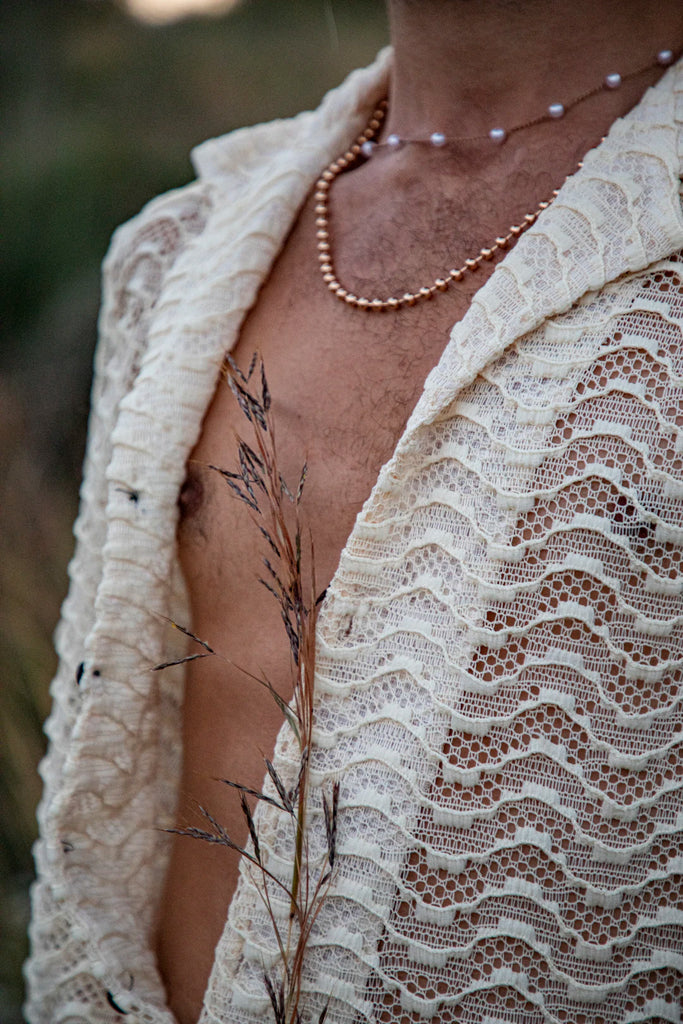Spotting Imitation Tahitian Pearls: Your Ultimate Guide

Frequently Asked Questions
1. What are Tahitian pearls?
2. How can I identify authentic Tahitian pearls?
3. What are common types of imitation Tahitian pearls?
4. What visual checks can I perform to spot fake Tahitian pearls?
5. Where should I purchase genuine Tahitian pearls?
The allure of Tahitian pearls is undeniable. Known for their stunning colors and unique beauty, these gems often find their way onto jewelry pieces that capture the hearts of many. Unfortunately, with their increase in popularity, imitation Tahitian pearls have flooded the market, making it essential for consumers to know how to distinguish between authentic and faux. In this guide, we'll take you through the key indicators to help you identify real Tahitian pearls, empowering you to shop with confidence.
Understanding Tahitian Pearls
Tahitian pearls are grown in the warm lagoons of French Polynesia and are the result of the black-lipped oyster, Pinctada margaritifera. These rare pearls range in colors from deep black to silvery gray, and even multicolored. Their unique coloration is one of the reasons they are so coveted, but it also makes them prime targets for imitation. To ensure you're investing in genuine Tahitian pearls, it’s crucial to familiarize yourself with the characteristics that make them unique.
The Anatomy of Authentic Tahitian Pearls
Before diving into spotting imitations, let’s discuss the primary features of genuine Tahitian pearls:
- Color: Authentic Tahitian pearls come in various hues, including peacock green, dark blue, and even shades of purple and eggplant.
- Surface Quality: Real pearls often have slight imperfections. Smooth and flawless pearls might be indicative of artificial products.
- Size & Shape: Tahitian pearls can range from around 8mm to 18mm in diameter. They are often baroque in shape, lending a more organic appeal.
- Lustre: The luster of Tahitian pearls is distinctive; they exhibit a deep sheen often described as reflective quality.
- Weight: Genuine pearls are denser than imitation pearls often made from plastic or glass, making them feel heavier in hand.
Common Types of Imitation Tahitian Pearls
Understanding the different types of imitation pearls out there will help you make better purchasing decisions. Some common forms include:
- Plastic Pearls: Often the cheapest option, these pearls are made entirely of plastic, making them lightweight and prone to scratches.
- Glass Pearls: Slightly more durable than plastic, glass pearls often have a coating that mimics the appearance of a genuine pearl but lack the depth and quality of real Tahitian pearls.
- Synthetic Pearls: These are masterfully crafted to replicate the appearance of real pearls, but they lack the unique characteristics of genuine Tahitian pearls.
Signs to Look for When Identifying Imitation Pearls
Now that you're acquainted with the definitions, let's explore specific signs that can help you spot imitations:
Visual Inspection Techniques
Begin with simple visual checks to harvest clues about the authenticity of the pearls:
- Check the Color: Real Tahitian pearls come in stunning variations, but their color often has depth and complexity. Beware of overly bright or uniform colors, which can indicate imitation.
- Look for Irregularities: Authentic pearls feature unique blemishes and flaws due to their natural formation process. If your pearls are flawlessly smooth, they may not be genuine.
- The Nacre Thickness: Genuine Tahitian pearls have layers of nacre, which give them their beautiful luster. If the pearl seems "too perfect" or completely smooth, it may indicate imitation.
Physical Checks
Although visual inspection is essential, there are also practical tests you can perform:
- Weight Test: Authentic Tahitian pearls are heavier than plastic or glass imitations. Holding multiple pearls can help you gauge their weight and feel.
- Temperature Test: Real pearls remain cool to the touch for a few moments when held. Imitation pearls often feel warm due to their material.
- The Tooth Test: Lightly rub the pearl against the surface of your teeth. Genuine pearls have a gritty feeling due to their nacre, while fake pearls feel smooth.
Where to Purchase Genuine Tahitian Pearls
Knowing where to buy your pearls can significantly reduce the chance of purchasing fakes. Here are some useful tips for finding dependable sources:
- Reputable Jewelers: Always choose established and reputed jewelers known for their quality products.
- Certification: Authentic Tahitian pearls almost always come with a certification from a credible gemological laboratory. Check for these documents.
- Online Platforms: If you are shopping online, do extensive research. Check reviews and buyer testimonials before making any purchases.
The Importance of Knowledge
Knowledge is power. The more you know about Tahitian pearls and how to spot fakes, the better equipped you'll be when making a purchase. Here are some key takeaways to remember:
- Understanding the nuances of Tahitian pearls is vital in distinguishing genuine pieces from imitations.
- Pay attention to the surface, color, and feel of the pearls; any discrepancies can be a warning sign.
- Always shop from reputable sources and ask for certifications to ensure your investment is worthwhile.
Your Confidence Boosting Armor
Empowering yourself with the information needed to recognize authentic Tahitian pearls will significantly enrich your shopping experience. By understanding their unique characteristics and knowing how to identify imitations, you can proudly showcase genuine Tahitian pearls that reflect your exquisite taste. Remember, an investment in real pearls enhances not only your jewelry collection but also your confidence and style. Look for these indicators, and you will be well on your way to embracing the beauty of the ocean's finest treasures.
In summary, navigating the world of pearls can be overwhelming, but by arming yourself with knowledge and keen observation skills, you can ensure your purchases add value to your life. The rich hues, remarkable luster, and uniqueness of authentic Tahitian pearls are waiting for you to discover. Happy pearl hunting!

Leave a comment